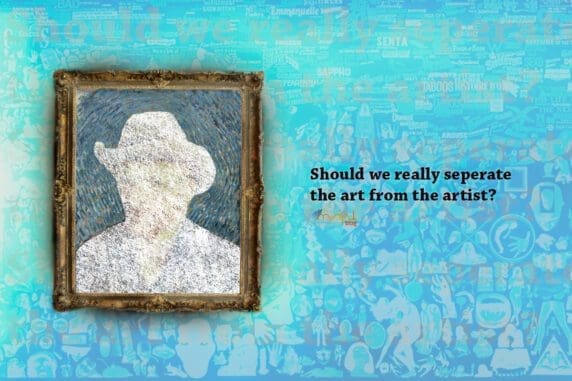
With our celebrity-worshipping culture and the #metoo movement drum beating to a fever pitch, sexual allegations started to surface, and many influential people in and out of the film fraternity faced accusations. While this crusade took its course, it became increasingly hard to separate the art from the artist.
This question poses a dilemma to many. When allegations of pedophilia against Michael Jackson started to surface, people were torn.

However, despite these events, he will forever be one of the most celebrated pop icons in history. Just like him, important figures are known for their achievements, irrespective of their doings.
In olden times, works of the Italian Baroque artist Caravaggio, a known miscreant at the time, were found impactful and inspiring. Judith Beheading Holofernes denoted the story of Judith, a titular woman who seduces and decapitates the Assyrian general Holofernes to free the Israelites from the grips of oppression and tyranny. Despite the artist’s shortcomings, this painting went on to be a symbol of female rage and inspired painters like Artemisia Gentileschi.
Many artists depicted the story of this femme fatale. Giorgione, Artemisia Gentileschi, Sandro Botticelli, and Giorgio Vasari were some of them. Judith also became a political symbol for overthrowing tyranny, an icon for rebellion. With Giorgio Vasari’s portrayal, Judith symbolized seductive femininity and physical masculinity. From a scintillating goddess to a coy noblewoman, artists displayed this story in its gory and glory, evoking sentiments of rage, pride, and rebellion.
In a more recent turn of events, Harvey Weinstein, a former film producer, and a sex offender was convicted for numerous sexual offenses. However, It was not until 2017 that accounts of sexual misconduct allegations surfaced against him. Now, on humanitarian grounds, it is justified if you decide not to watch the films being made by the company to prevent it from reaping financial benefits.
Nevertheless, there are many other factors that should be taken into account. Despite the offense, it is also the collaborative effort of the numerous people who have worked for a project. Does the work remind you of the offense? Does the offender’s value system bleed into it?
This dilemma is persistent in other areas of work too. James Watson was a pioneering figure in the realm of science. He was one of the fathers of the DNA. However, his honorary titles were taken away because of his racist and sexist beliefs. Here, we dive a little deeper into this dilemma. Do we disassociate his seminal work from him? Do we discredit the revolutionary impact his research had on science? Is it okay to excuse a scientist but not an artist because their work might not be seen as transformative by some?
Nevertheless, with changing times, and the origin of AI artists such as Botto, there is also a paradigm shift in the perception of right and wrong. What seemed criminal before may come off as silly to us. The reason Oscar Wilde was condemned and jailed is one of the reasons he is celebrated as an author and playwright now. The more invested you are in an artist and their work, the less black and white is the situation.
An artist can be immoral and still create good art. It does not mean you buy in the idea that an artist creates art at the expense of decency. If someone attests to the wrongdoings of an artist, it is their right to share and our duty to hear.
In the end, every situation is nuanced, and each of us has our moral hierarchy. It’s our decision on where to draw the line. As we grow more aware and hold each other accountable, we should have more control over things we consume and actively or passively support. As the cases of the badly behaved artist become more complex and layered, we find ourselves sucked in a vortex of this dilemma. It becomes necessary for us to assess the three C’s: context, consequences, and chances.
Featured image and graphics by Gourishankar





Be the first to comment